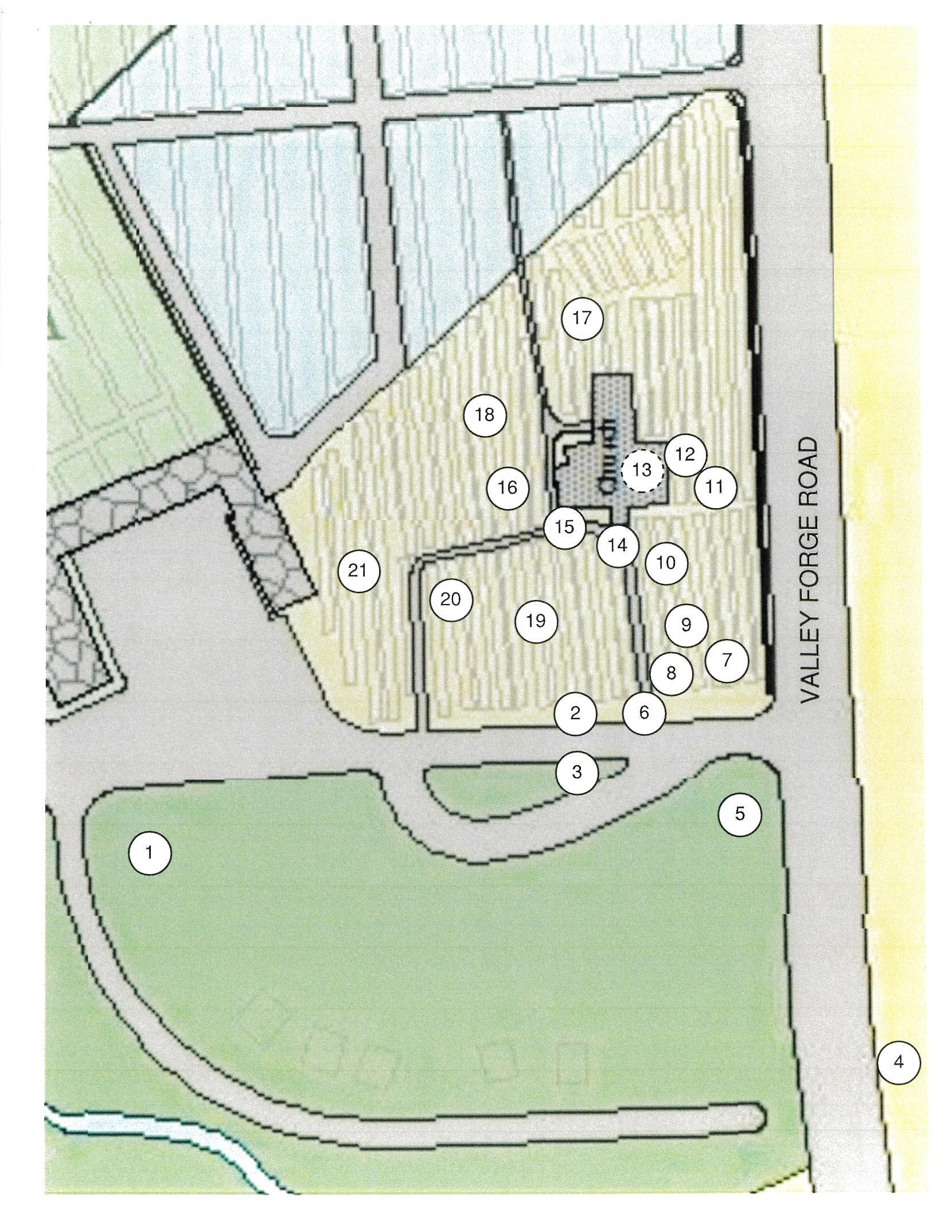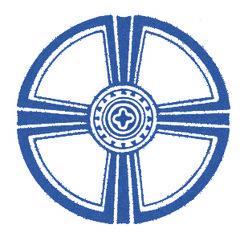

A
Walk Through the Ancient Yard of St. David’s Church, Radnor
by Michael Merrick
Celebrating The 250th Anniversary of the Declaration of Independence

The Parish History and Archives Committee
Major General Anthony Wayne Reinterred in the Churchyard
Compiled by the St. David’s Church Parish History and Archives Committee
Editing and Layout by Marianne Cook
A WALK THROUGH THE ANCIENT YARD OF
ST. DAVID’S CHURCHYARD
Michael Merrick
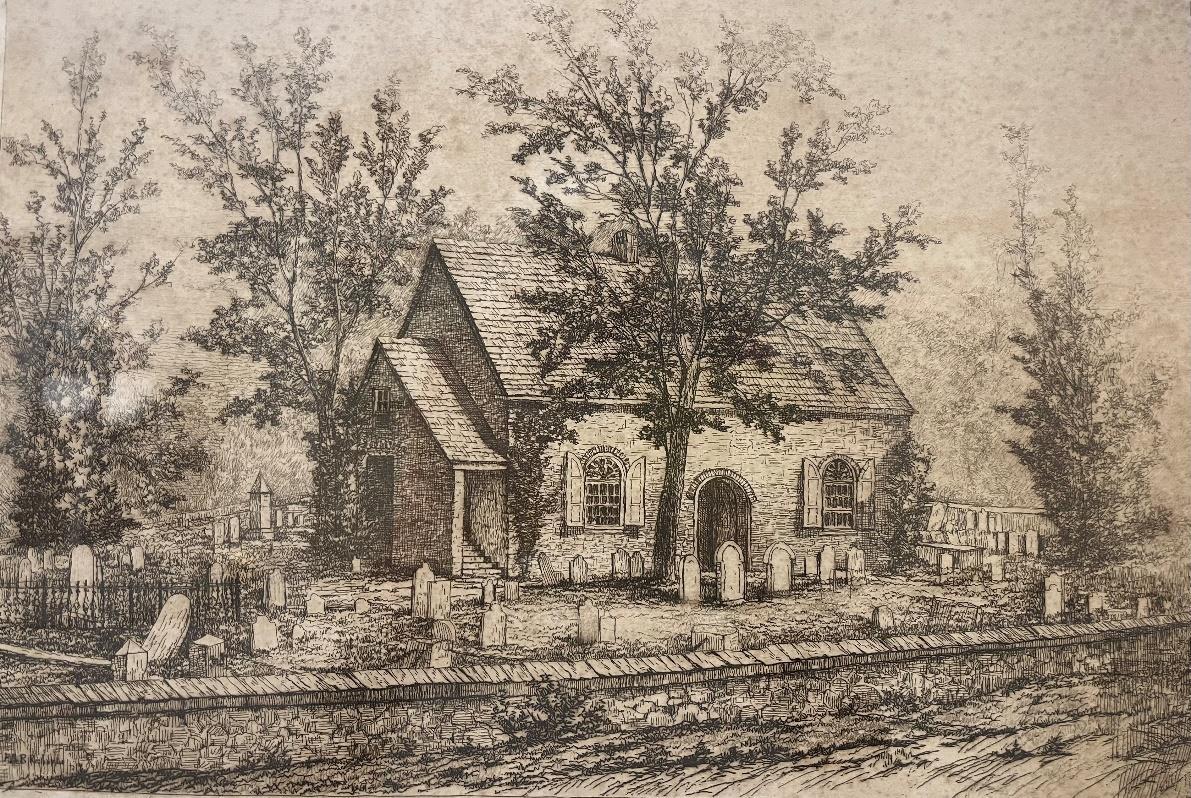
by parishioner, Frederick DeBourg Richards, 1894
The earliest section of the St. David's churchyard, dating back to before the stone church was built in 1715, is known as the Ancient Yard. Within the area surrounded by the three original border walls on the south, east and partial west, the grounds immediately around the church hold the oldest graves. The graves and the church building are situated from east to west in accordance with early Christian tradition. A variety of tombstones are seen in the Ancient Yard. Most of them are of the headstone and footstone type with names and dates on the main vertical tablet and initials on the footstone. Another style is the table or altar tomb where a large horizontal tablet is placed over a fieldstone foundation. The gravestones in this section are made of white marble, blue marble and some field stone. Early markers of wood or damaged stones were usually replaced with local fieldstone, a common practice in the 18th century. With many notable burials and other 18th century features, the Ancient Yard of St. David’s Churchyard reflects the rich history of the parish during the Revolutionary period.
Etching
1. The last of the "Three Brothers"
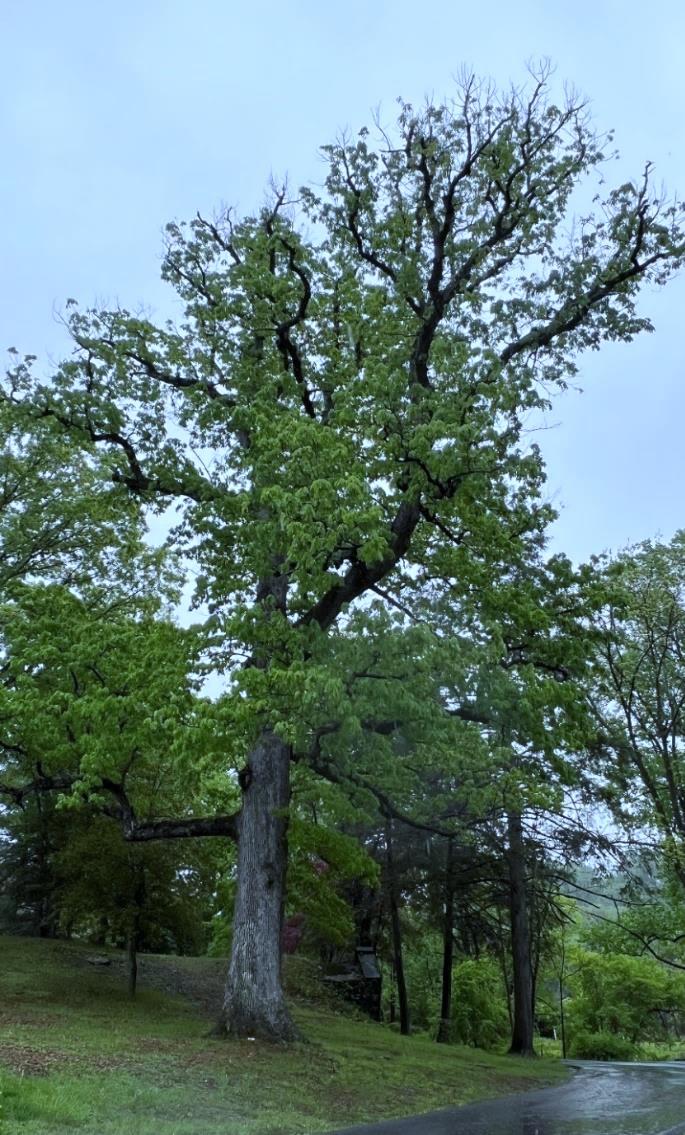
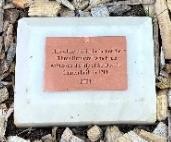
“This white oak is the last of the ‘Three Brothers’ which has witnessed the life of St. David’s Church built in 1714.”
From the southwest corner of the Churchyard wall stands the last of a trio of White Oak trees (Quercus Alba). In 2014, one of the two remaining trees was cut down; the growth rings of the stump were counted indicating that the tree was approximately 375 years old. William Black, a parishioner, told us that given its age, the tree would have qualified as a “William Penn Tree”, signifying that it was alive when Pennsylvania was founded by William Penn in 1682.
This last brother witnessed life before the arrival of the first fifteen families from Radnorshire, Wales, when members of the Lenni Lenape tribe roamed the woods. It saw the building of a log church and witnessed its burning down. In 1714 it watched as the Radnor Church congregation built “a handsome stone church” for its missionary, John Clubb. And, for more than 300 years, it has watched over its community of worshipers and celebrated 174 years of the St. David’s Country Fair.
2. The Mounting Block
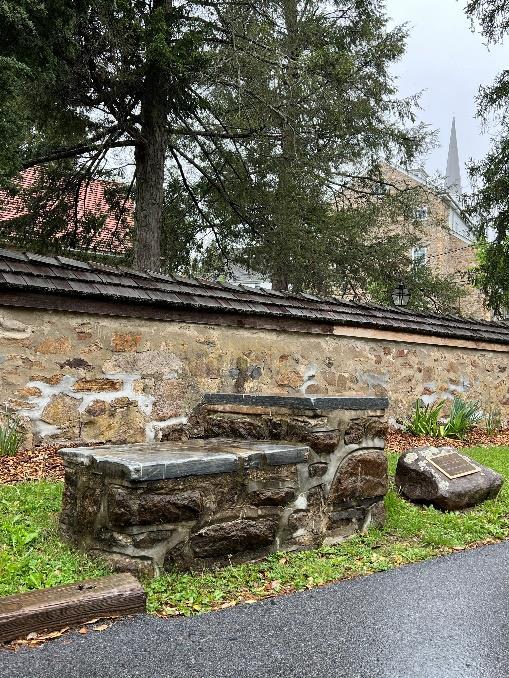
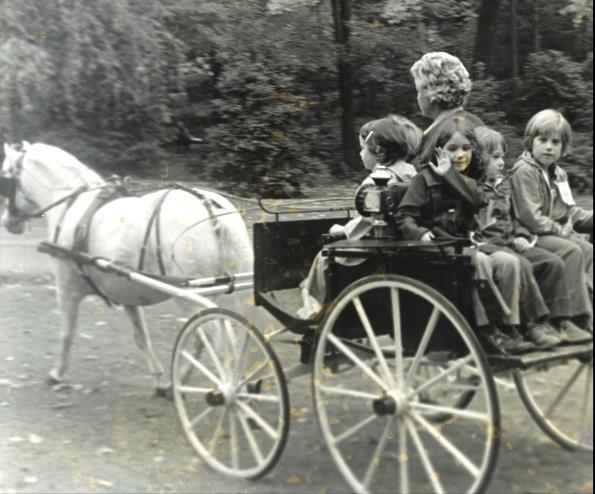
Betty Moran with her grandchildren at the St. David’s Country Fair.
The mounting block sits directly in front of the south or front wall. It was constructed in 1776 during the Revolutionary era by Jonathan Hughes using local fieldstone capped with Valley Forge Bluestone. It aided in the mounting and dismounting from horses and carriages when members of the congregation came to attend services. Records indicate that 3 Shillings 6 Pence was paid for “making horse block”.
The Mounting Block
3. Adam Siter, German Schoolmaster
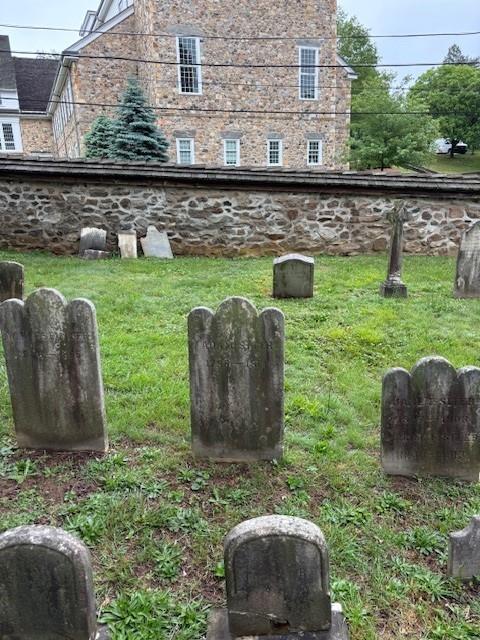
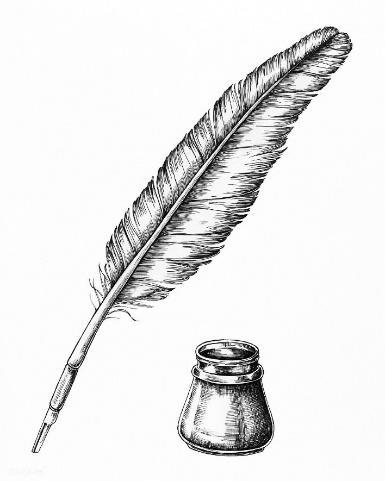
Across the driveway at the site of the present flagpole once stood an early stone schoolhouse. Henry Pleasants tells us that it was built in 1723 and that it had “one of those large chimneys and open fireplaces peculiar to the schoolhouses of those days.”
According to minutes of the Society for the Propagation of Gospel in Foreign Parts Mr. Rowland Jones served as the first schoolmaster. Later, the German, Adam Siter, taught, a man “who was paralyzed and had to cut pens with one hand.” His scholars, both here at Radnor and, also at the Old Eagle School, endearingly called him “Old stepand-go-fetch-it.”
In 1844 the school building was dismantled and the stone was used to build the Old Rectory (Journey’s End) across the road.
Churchyard
Ancient Yard Lot 139 Grave 5
4. The Spring House
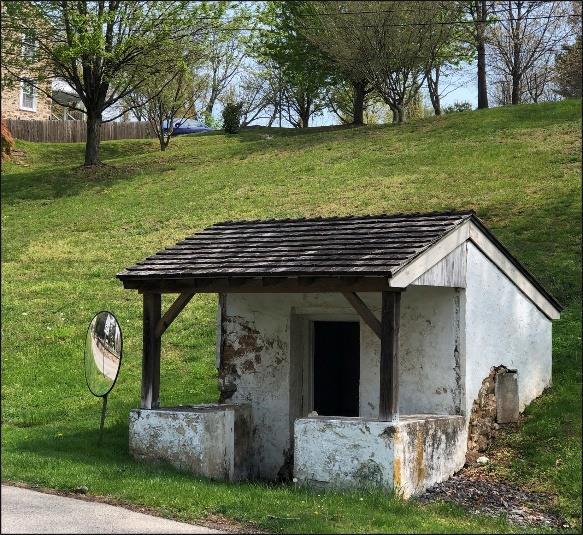
Because, as Henry Pleasants tells us, “The proximity to water (for baptisms) is said to have determined the present location for the church” the Spring House may be the oldest structure at St. David's as protection of a good water source was a priority for the early settlers. The stonework is set with a masonry composition using sand, clay and lime, commonly used in rural 18th century structures.
Legend tells us that British Major General Grey organized his troops on the hill above the spring house before the Battle of Paoli.
An article from, “The Franklin Repository,” of 1858 tells us that there is “ a beautiful spring of water, which has always been a favorite resort for those attending this religious sanctuary.’ People “spread their humble repast, on summer days, and reclined beneath the overhanging trees, waiting for the services of the afternoon.”
5. The Old Sentinel Tree
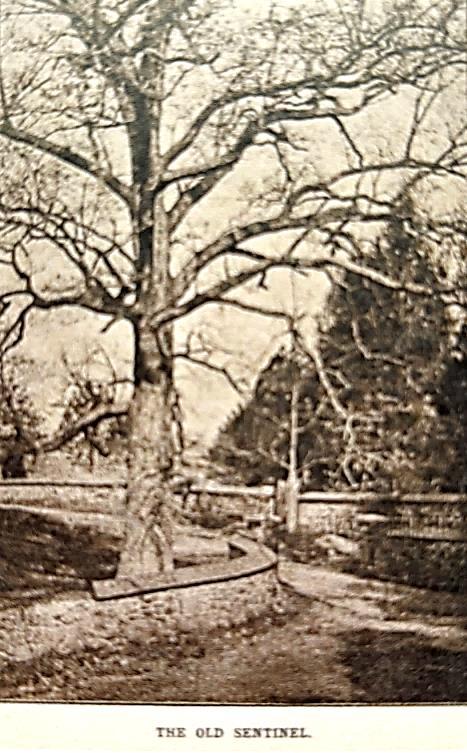
At the main driveway entrance on the south side, another great White Oak once stood. This tree was one of a series of trees selected for use by Washington's army as a watch tower during the encampments at Valley Forge and the Radnor Piquet. Men climbed high up in the trees and used mirrors to signal one another to relay the movements of the British Army and suppliers.
Tradition holds that after the tree was struck by lightning in 1895, the two aisle benches in the Church were constructed using its wood. Renowned architect and parish member, R. Brognard Okie, created the design.
6. The Lychgate
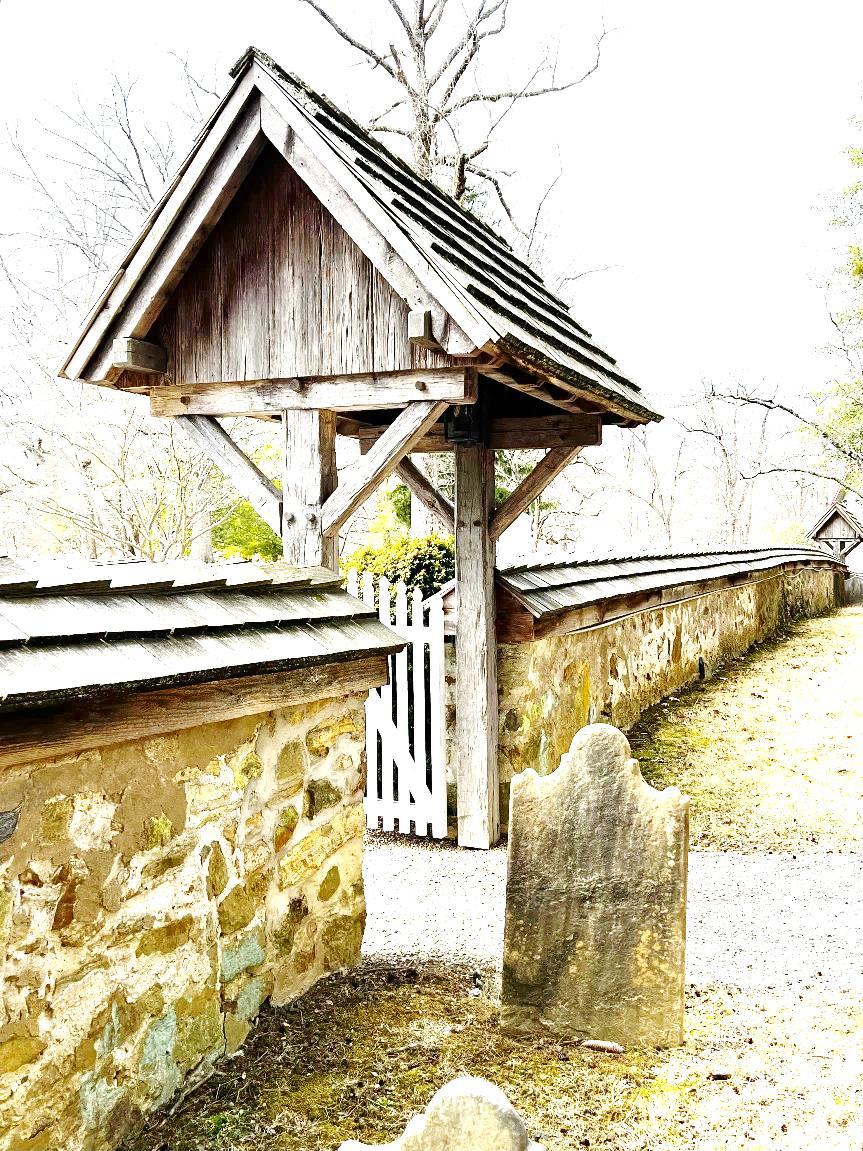
The main entrance gate is known as a Lychgate, a prominent feature in English church architecture. The Lychgate has been traditionally used as a starting point for funerals and other church processions. The term “lych” comes from the AngloSaxon word for “corpse.” Records show payment for a new gate at Christmas 1784 in the amount of 22 Shillings 6 Pence. The latest rebuilding of the lychgate occurred in 2013 and utilized lumber from an early 19th century barn along with cedar shingles.
7. Edward Hughes, The First Parish Burial
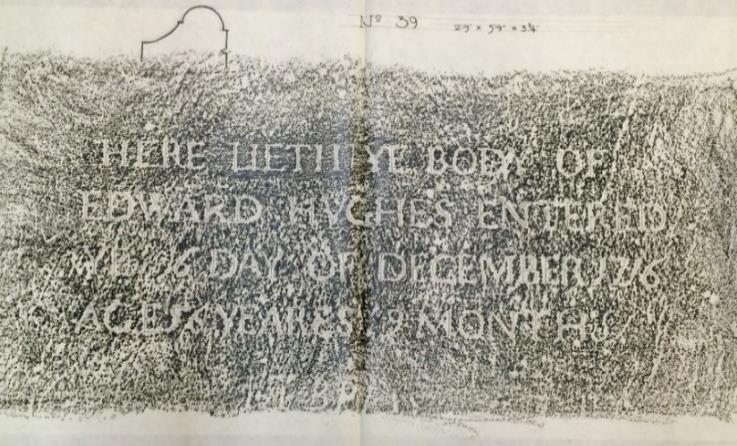
“Here lieth the body of Edward Hughes entered ye 6 day of December 1716
Aged 56 years 9 months”
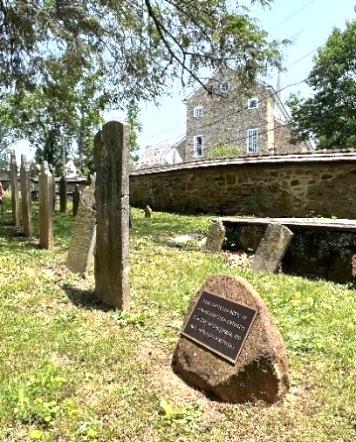
The grave of Edward Hughes lies to the right after entering the Churchyard. A local fieldstone and plaque now mark the site of his grave, the first parish burial in December 1716. Sadly, his gravestone, which came from London and would have served as ballast for the ship crossing the Atlantic Ocean, has gone missing, but a rubbing exists created in 1926 and is featured above. Henry Pleasants tells us that Edward Hughes “was Rector of the Church as early as 1704.”
Churchyard
Ancient Yard
Lot 001
Grave 20
8.Captain Anthony Wayne and Family
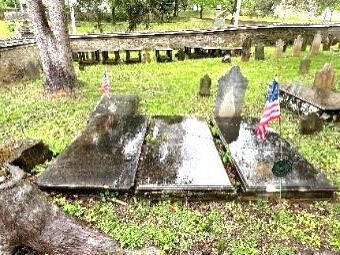
Three flat monuments mark the graves of members of the Wayne family just inside the Lychgate to the left.
Captain Anthony Wayne, the patriarch of the Wayne family in America, is buried with his son, William, in the first grave. William died in 1726 at age 18 and Capt. Wayne died in 1739. Capt. Anthony Wayne, grandfather of General Anthony Wayne, served in the British Army of King William III as a Captain of Dragoons. He distinguished himself at the Battle of the Boyne in Ireland in 1690. He and his family emigrated to Pennsylvania from Rathdrum, County Wicklow in 1723. He served on the vestry in the 1720’s with his friend, John Hunter.
The center tablet marks the grave of Isaac Wayne along with Isaac's daughter, Ann. Isaac was the father of the renowned Major General Anthony Wayne.
The third tablet marks the grave of Ann's husband, Captain William Hayman, born in Exeter, England in 1740. Capt. Hayman served in the Continental Navy during the Revolution aboard a ship called, “Hope”.
A headstone among the grouping marks the grave of Francis Wayne and his wife, Elizabeth. Francis emigrated with his father, Capt. Anthony Wayne, and his brother, Isaac.
Captain Anthony Wayne Isaac Wayne & Ann Wayne Hayman
Churchyard
Ancient Yard
Lot 003
Grave 7
Churchyard
Ancient Yard
Lot 008W
Grave 3
9. John Hunter
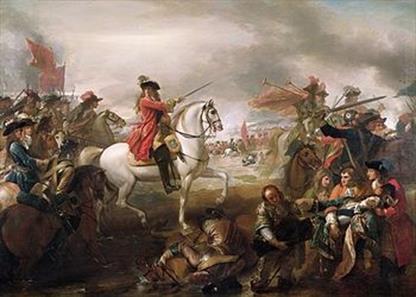
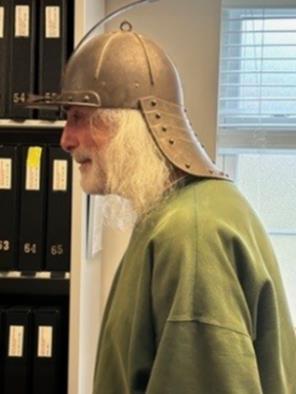
John Hunter was a lifelong friend of Captain Anthony Wayne serving together in King William's army at the Battle of the Boyne in Ireland in 1690 on the banks of the River Boyne. They fought against King James II who was attempting to regain the British crown. Together they emigrated to Pennsylvania in 1723. Both men served on the Vestry of Radnor Church in the 1720's and, according to a descendant, Clarence Hunter, shared a pew bench located where the present second pew on the right, counting from the front, is now located.” John Hunter died in 1734.
Churchyard
Ancient Yard
Lot 001
Grave 6
King William III at the Battle of the Boyne by Benjamin West
Michael Merrick wearing a helmet similar to those worn by Captain Anthony Wayne and John Hunter during the Battle of the Boyne.
10. Native American Graves
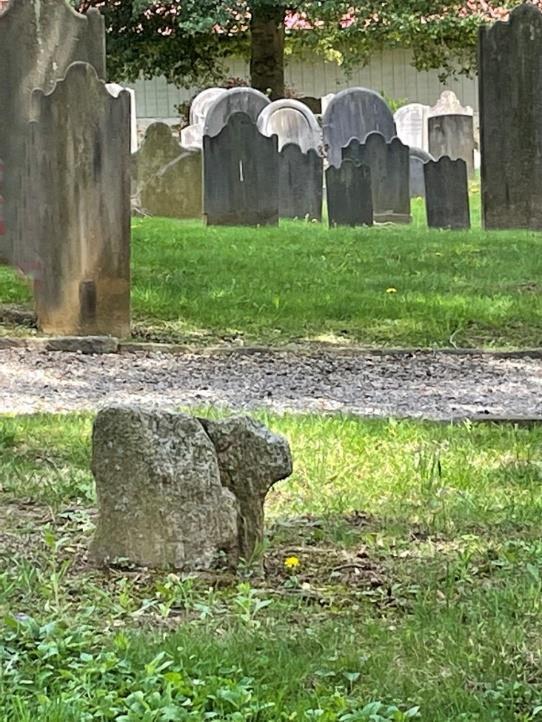
Small fieldstones mark the site, that according to legend, are the graves of Native American members of the Lenni Lenape tribe.
The stones are said to date from 1709, but the graves may predate the founding of the parish or ownership of the land by William Davies.
The Lenni Lenape people typically marked their graves with wooden monuments. The 1709 stones serve as an early replacement for this type of memorial. The juxtaposition of the graves and the spring suggest the presence of a nearby tribal settlement.
11 Mary (Polly) Penrose Wayne
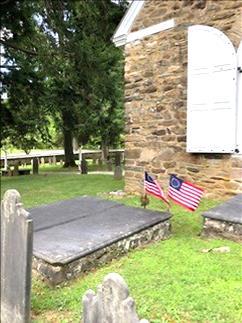
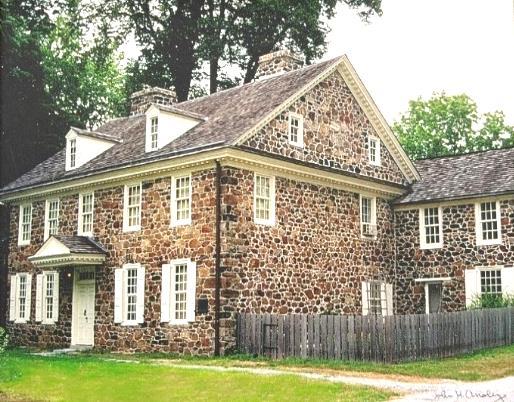
Waynesborough
Mary “Polly” Wayne, wife of Gen. Anthony Wayne, and her sister, Margaret Penrose, lie together marked by two flat altar tombs at the southeast corner of the church. They were daughters of Bartholomew and Mary Penrose of the prominent Philadelphia family. Polly was a friend of General Anthony Wayne’s sister, Ann. Gen. Wayne and Polly were married in 1766 at Christ Church in Philadelphia. The couple moved into the family homestead, Waynesborough, a Georgian style country manor house, built by Captain Anthony Wayne in about 1745. Polly managed their household and farm during her husband’s military service. She is credited with preserving Waynesborough during searches conducted by British troops in September 1777.
Mary (Polly) Wayne has been honored as a “Lady Patriot” by both the Daughters of the American Revolution (DAR) and the Sons of the American Revolution (SAR). Consequently, there are two flags at her tombstone outside the chancel window of the Church.
-
- Churchyard
Ancient Yard
Lot 005W
Grave 8
12. The Rev. William Currie and Family
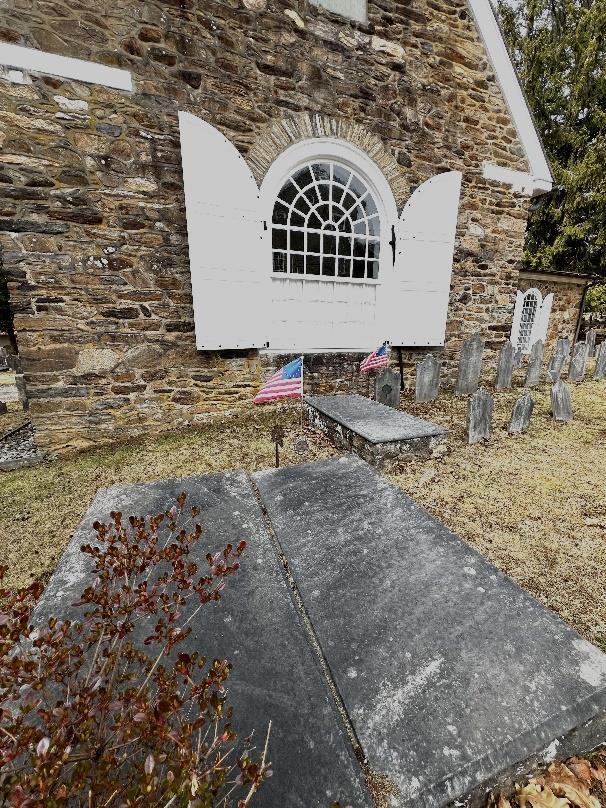
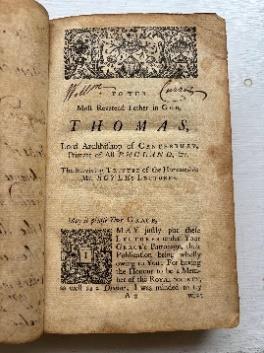
The graves of The Reverend William Currie and family are situated just beneath the chancel window on the east side of the church. Pastor Currie, a Scots missionary with three congregations (St. David’s, St. Peter’s in the Great Valley and St. James, Perkiomen) served from 1737 to 1776. He was a man of God who believed that to be true to his ordination vow he must pray for the king. He stepped aside from officiating at services when members of the Radnor Church objected. An indication of the troubled times was Rev. Currie’s struggle having one son, Richard, who became sick and died serving as a Patriot at General Washington’s encampment, and, another son, Ross, who joined the Corps of Pennsylvania Loyalists in Nova Scotia and never returned home.
An activist, Reverend Currie spoke in support of establishing a militia when he preached a sermon entitled, “The Lawfulness of Defensive War.” He welcomed the Reverend Henry Muhlenberg, a German Lutheran, and invited him to preach at St. Peter’s in the Great Valley. In 1784 Rev. Currie represented St. David’s at the meeting the Rev. Dr. White held founding the Diocese of Pennsylvania prior to establishing the Episcopal Church of America.
Churchyard
Ancient Yard
Lot 001
Grave 55
13. Chancel Window and Stonework 1786
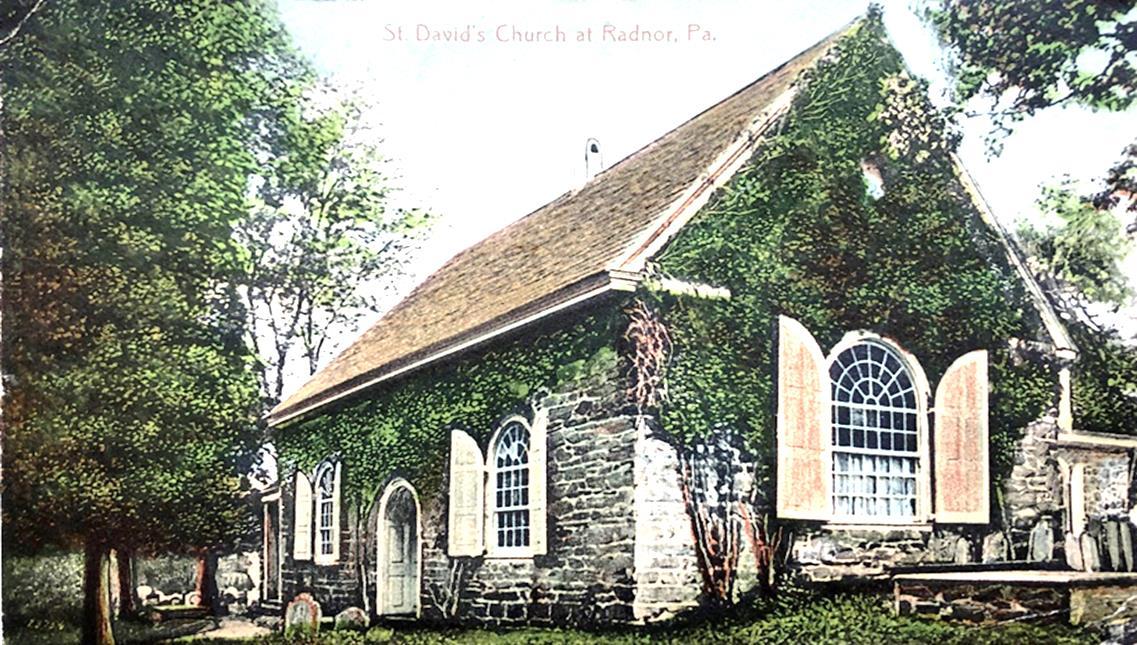
The large chancel window on the east side of the church was installed in 1786 and replaced an original smaller window. In 1714 the original Radnor families met with John Clubb who had come from London to be their missionary sponsored by the Society of the Propagation of the Gospel in Foreign Parts. He was promised “a handsome stone church “ in gratitude. The church building was constructed in only one year using local fieldstone and oak timbers. The early parish members helped in the construction under the guidance of a master mason and carpenter. Great care can be seen in the dressing and laying of the stone courses as the rough stones had to be squared and shaped by hand. Limestone from the Great Valley was quarried and burned to make lime for the mortar. Local oak trees were cut and hewn for the rafters. The steep roof was designed to shed the snow. Church and local legend states that the original leaded windows were removed by Washington's army and melted into musket balls by the American army after the Battle of Brandywine and during the Radnor Piquet 1777-1778.
Victorian, hand colored penny postcard photographed and published by Philip H. Moore
14 Judge William Moore and his wife, Williamina
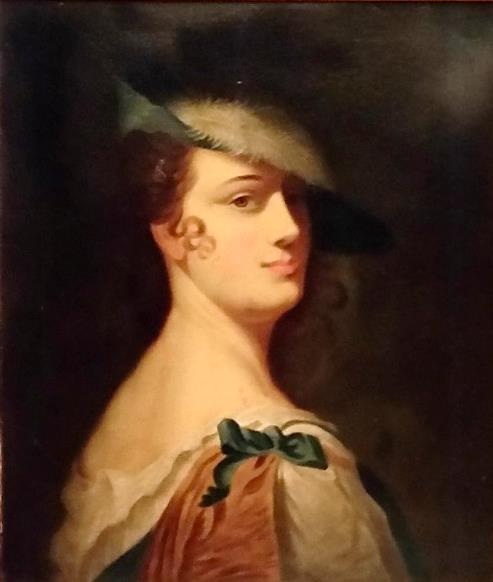
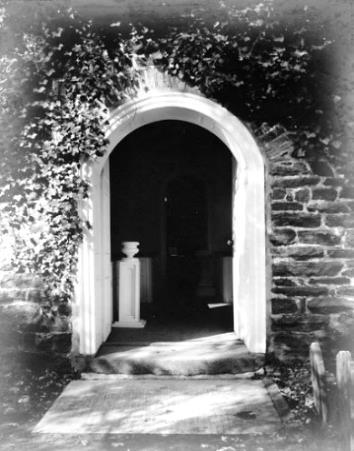
A large bluestone tablet at the church entrance marks the graves of Judge William Moore and his wife, Williamina. A well-respected Chester County Chief Justice and a member of the Provincial Assembly, William Moore held a hard loyalist position during the Revolution and was an owner of enslaved people. Their home, Moore Hall, was used by both British and American armies during the conflict. It still stands at Pickering Creek, Chester County. During the Encampment at Valley Forge in 1778 it served as the headquarters for Colonel Clement Biddle of the Continental Army. William Moore died in 1783 and Williamina died in 1784. Their gravestone is beautifully inscribed.
Churchyard
Ancient Yard
Lot 013
Grave 11
Gravestone outside the church door
15. Gallery Stairway Addition to Church
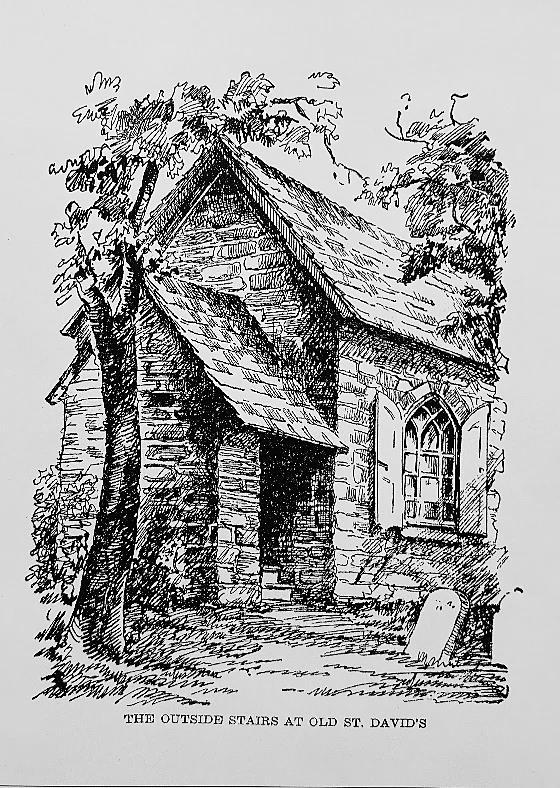
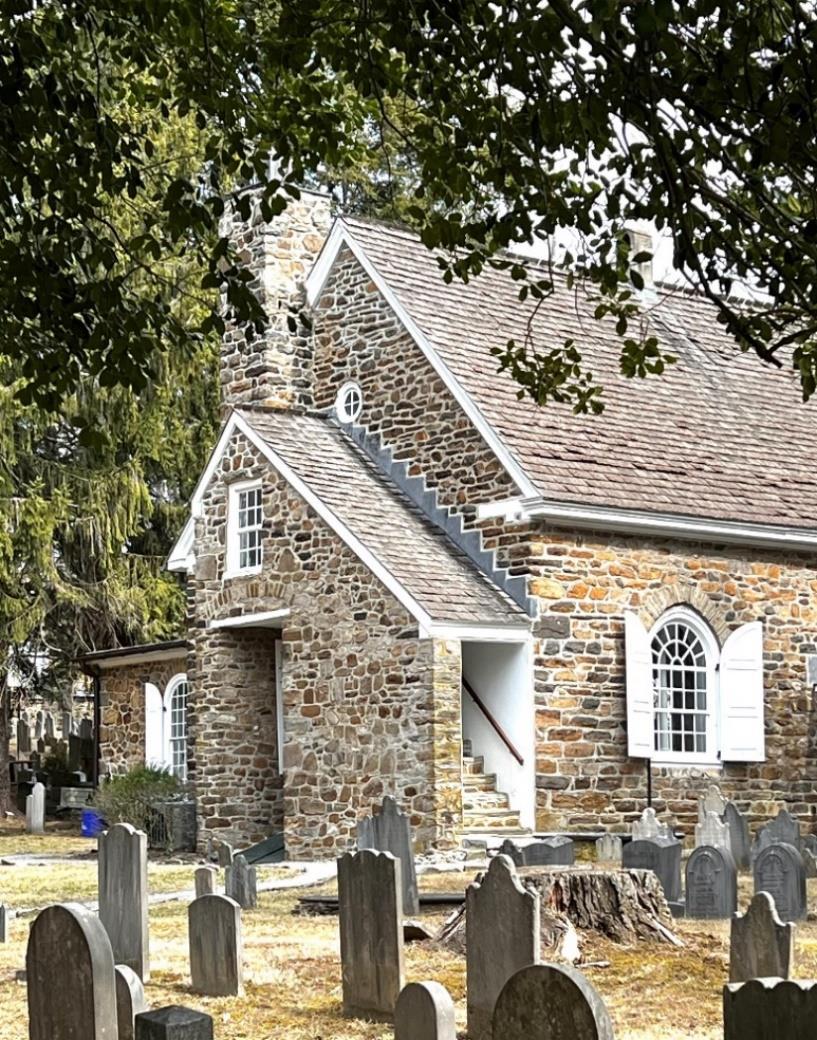
In 1771 an exterior stairway was constructed at the west end of the Church which led to a gallery that originally spanned the length of the building, passing over the door to the east wall. Building the stairway outside the main room saved valuable space for a growing congregation. An interesting feature is the brick arch in the west wall that is built over the grave of James James who died in 1756. In order not to disturb his remains, foundations for the stairway were laid around the grave and a relieving arch was built over it.
16. Battle of Brandywine Soldiers
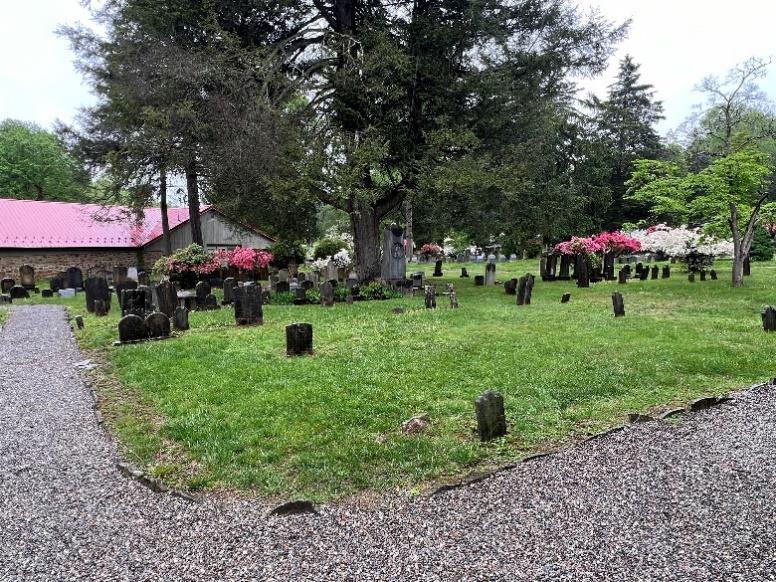
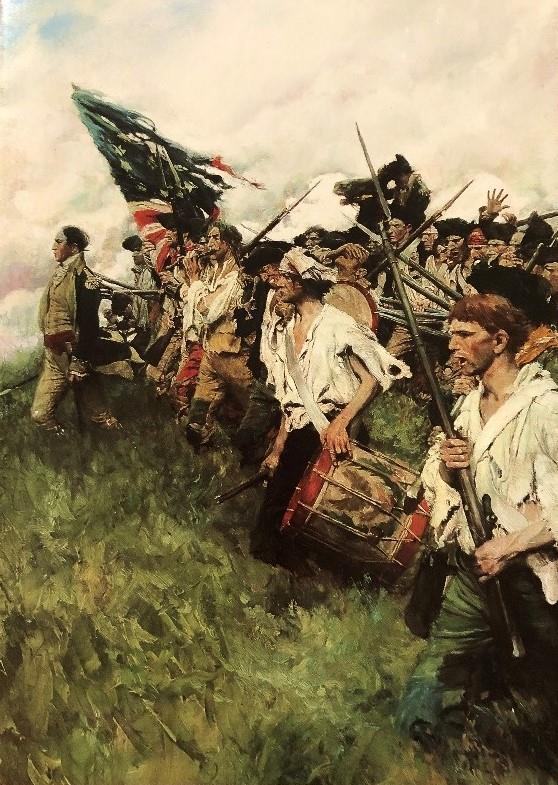
The open yard just west of the organ loft stairway is believed to be the resting place of sixteen American soldiers from the Battle of Brandywine, fought on September 11th , 1777. This battle, part of the Philadelphia Campaign, resulted in a British victory allowing them to capture Philadelphia, the American capital. The graves are thought to be of soldiers who were sick or wounded in battle and died at local farmhouses as Washington's army passed through the area.
The Nation Makers by Howard Pyle (detail)
17.Major General Anthony Wayne
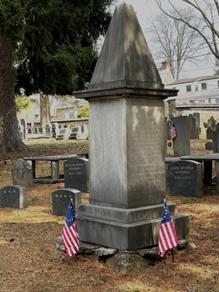
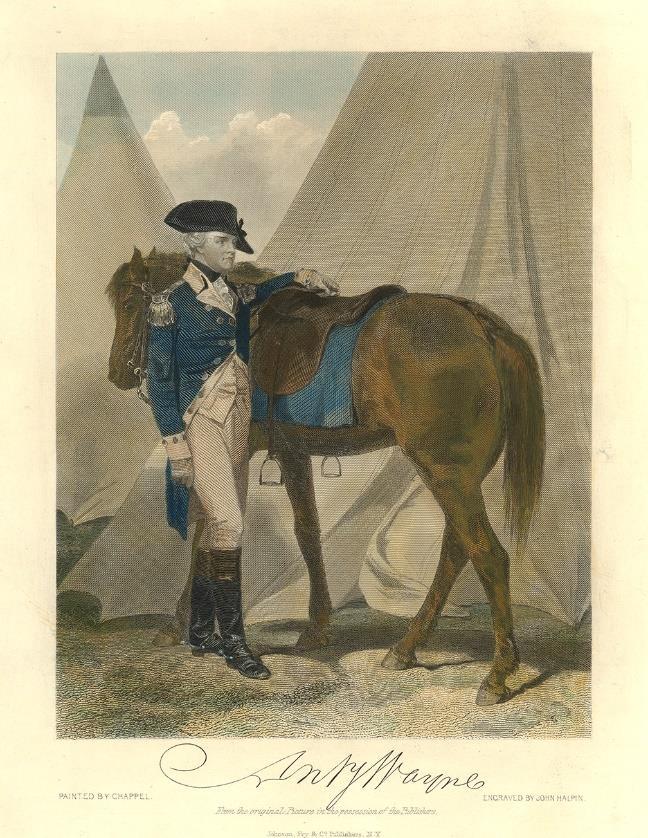
The grave and monument of parishioner and vestry member, Maj. Gen. Anthony Wayne, stands just north of the church. Appointed General of the Army by General Washington, he was a distinguished leader during the Revolution and served as a Vestry member at St. David’s. General Wayne died in 1796 while on an inspection tour of army outposts in Fort Presque Isle near Erie, PA. At his request he was buried beneath the fort’s flagpole and his remains were later reinterred at St. David’s Church. Legend tells us that some of his bones were lost on the way back to Waynesborough. It is said that every year on his birthday, January 1, Wayne rises from the grave, mounts his horse and dashes up and down the highways of Paoli looking for his lost bones. The monument was designed by architect William Strickland and was erected by the PA State Society of the Cincinnati in 1809.
Churchyard
Ancient Yard
Lot 006W
Grave 1
18 Edward and Frances Pearse
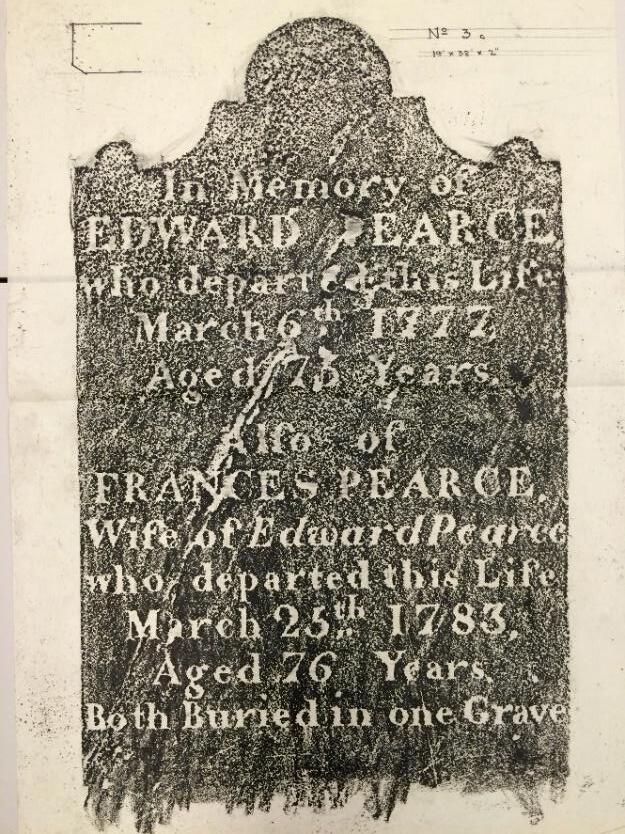

Edward Pearse was the owner of the land where the Battle of Paoli took place. This battle, also called the “Paoli Massacre” took place on September 20-21, 1777. General Anthony Wayne, along with 2,200 men believed that their position was unknown in this secluded spot of woods. However, The British had intercepted messages and attacked with bayonets and sabers. The battle left 53 dead, about 150 wounded and 71 captured.
He was also the mason and carpenter who built St. Peter's Church in the Great Valley in 1744.
This grave rubbing, along with others in the Ancient Yard, was made in 1926 at the direction of George Harrison to document burials. This effort has proved invaluable because most of the gravestones are unreadable now.
Edward Pearce Frances Pearce Churchyard Churchyard
Ancient Yard
Lot 012
Grave 3
Ancient Yard
Lot 012
Grave 4
19 Frederick (Freddy) Worrall
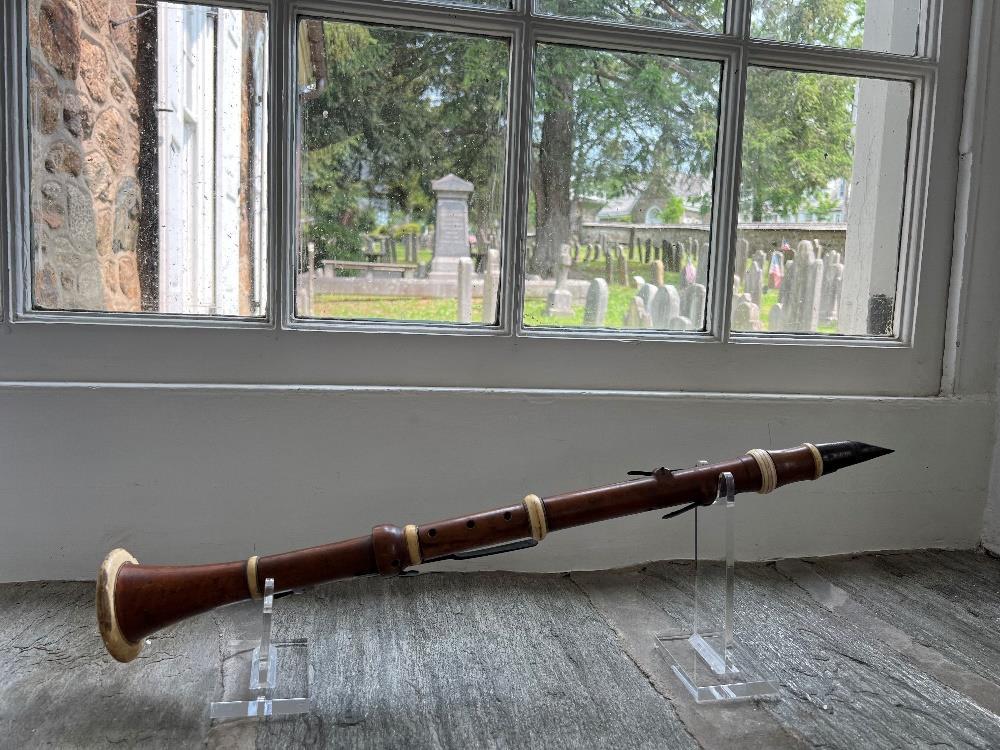
Frederick (Freddy) Worrall, born in 1777, was an early St. David's parishioner and musician. He is buried with his wife, Sarah. Freddy Worrall is said to have played the clarinet for services prior to the bass viol or the melodeon. Around 1870 a small “second hand” pipe organ was installed. His clarinet, gifted to St. David’s by Mrs. Ashton Locke Worrall, is preserved in the St. David's Archival Library. The clarinet was stolen from the Vestry Room of the Church in 2003 and later found by Groundskeeper, Pedro Muniz.
Churchyard
Ancient Yard Lot 019 Grave 8
20. Dr. Henry Yates Carter
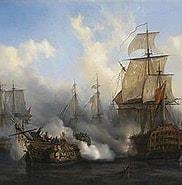
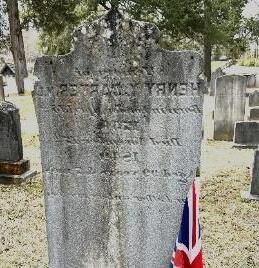
Dr. Henry Carter was born in London in 1750. He was a surgeon in the British Royal Navy aboard Lord Nelson’s Flagship, the HMS Victory. On October 21,1805 Dr. Carter served at the Battle of Trafalgar. This naval engagement fought on October 21, 1805 during the Napoleonic Wars set England against France and Spain. England claimed victory, although Lord Nelson was mortally wounded during the battle which occurred off the coast of Cape Trafalgar, Spain. Dr. Carter died after coming to America in 1849 at age 99.
Churchyard
Ancient Yard
Lot 002
Grave 33
Battle of Trafalgar by Benjamin West
References
“Around the Boundaries of Chester County” by Wilmer W. MacElree, 1934
“History of Delaware County, Pennsylvania” by George Smith, M.D. Pub. Henry 8. Ashmead, Philadelphia, 1862
“The History of Old St. David's Church” by Henry Pleasants Pub. John C. Winston Co., Philadelphia, 1915
“The Indians of Lenapehoking” by Herbert C. Kraft, John T. Kraft Pub. Seaton Hall University Museum, 1991
“The Philadelphia Campaign”, Vol. 1 by Thomas J. McGuire Pub. Stackpole Books, 2006
“Notable Women of St. David's” Pub. Parish History and Archives Committee, 2020
“Rev. William Currie 1710-1803, Aspects of his Life” by Mike Bertram Pub. Tredyffrin Eastown History Quarterly, Vol. 42 Number2, 2005
“Unlikely General "Mad" Anthony Wayne and the Battle for America” by Mary Stockwell Pub. Yale University Press, 2018
Illustrations
